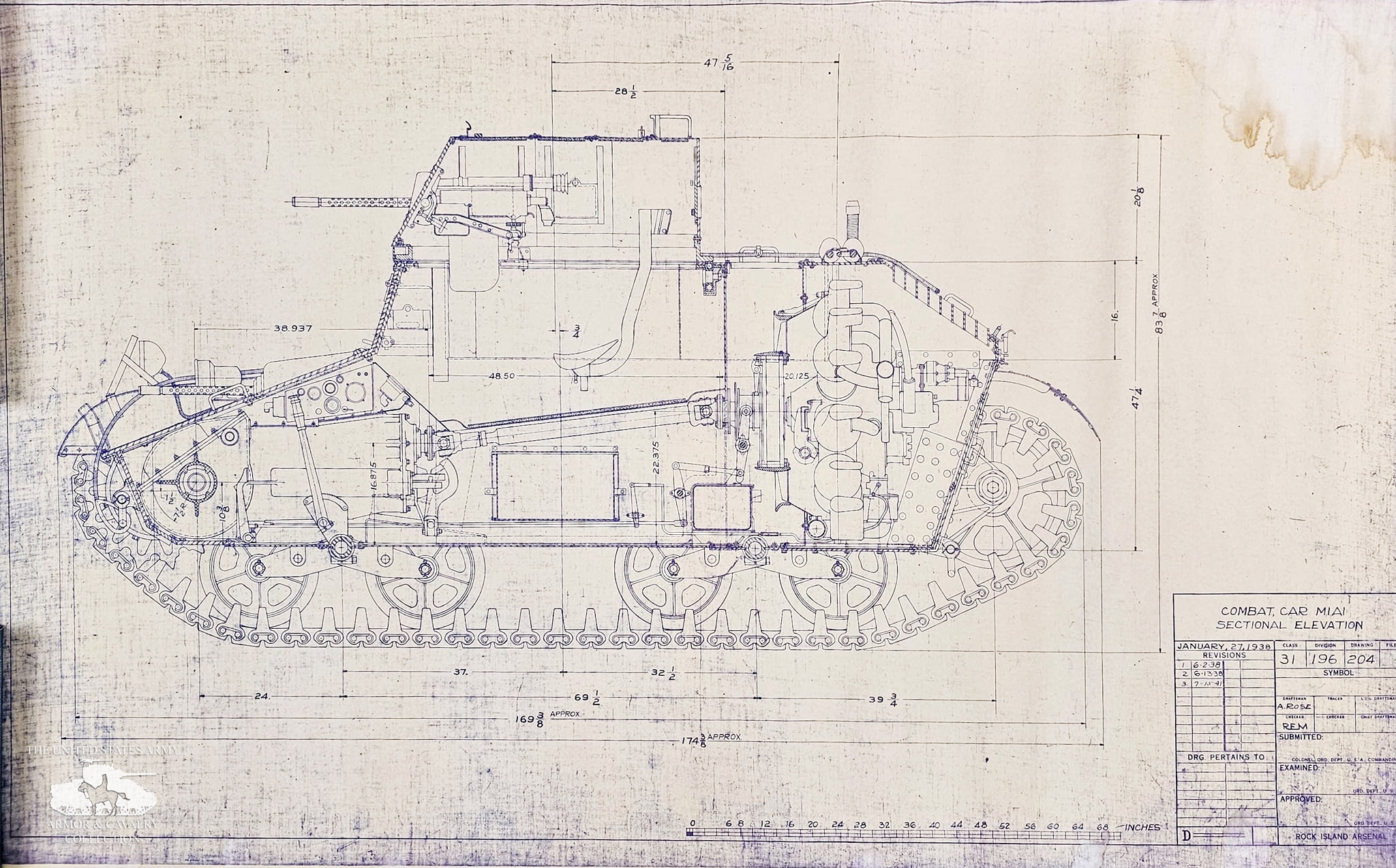M1 Combat Car on:
[Wikipedia]
[Google]
[Amazon]
The M1 combat car, officially Light Tank, M1, was a
 In the mid-1930s, the
In the mid-1930s, the
WWII vehicles"Mobile Machine-Gun Nest Carries Five Guns" ''Popular Mechanics'', September 1937Tanks Encyclopedia article.
{{Use dmy dates, date=June 2017 World War II light tanks Interwar tanks of the United States Light tanks of the United States Light tanks of the interwar period Military vehicles introduced in the 1930s
light tank
A light tank is a Tank classification, tank variant initially designed for rapid movements in and out of combat, to outmaneuver heavier tanks. It is smaller with thinner vehicle armour, armor and a less powerful tank gun, main gun, tailored for ...
used by the United States Cavalry
The United States Cavalry, or U.S. Cavalry, was the designation of the mounted force of the United States Army. The United States Cavalry was formally created by an act of United States Congress, Congress on 3 August 1861 and ceased as a dist ...
in the late 1930s and developed at the same time as the U.S. Army Infantry Branch's very similar Light Tank, M2.
After the Spanish Civil War
The Spanish Civil War () was a military conflict fought from 1936 to 1939 between the Republican faction (Spanish Civil War), Republicans and the Nationalist faction (Spanish Civil War), Nationalists. Republicans were loyal to the Left-wing p ...
, most armies (including the U.S. Army), realized that they needed tanks armed with cannons, not merely vehicles armed with machine guns, and so the M1 became obsolete.
History and development
The National Defense Act of 1920 set tanks as the responsibility of the infantry and the general staff defined the purpose of tanks as the support of infantry units. Light tanks were defined as weighing five tons or less – so they could be carried by trucks – and medium tanks no greater than 15 tons to meet bridge weight limits. With very tight restrictions on spending, tank development in the U.S. was limited to a couple of test vehicles a year. The mechanization of the army was promoted by GeneralDouglas MacArthur
Douglas MacArthur (26 January 18805 April 1964) was an American general who served as a top commander during World War II and the Korean War, achieving the rank of General of the Army (United States), General of the Army. He served with dis ...
(at the time the Chief of Staff of the US Army) who believed that the cavalry should have tanks for an exploiting role rather than acting in support of the infantry.Chamberlain & Ellis (1969), p. 84. To allow U.S. Army cavalry units to be equipped with armored fighting vehicles, the tanks developed for the cavalry were designated "combat cars".The same loophole was used for Japan's Type 92 heavy armoured car, a light tank for the cavalry.
 In the mid-1930s, the
In the mid-1930s, the Rock Island Arsenal
The Rock Island Arsenal comprises 946 acres (383 ha) and is located on Arsenal Island, originally known as Rock Island, on the Mississippi River between the cities of Davenport, Iowa, and Rock Island, Illinois. It is home to the United Stat ...
built three experimental T2 light tanks inspired by the British Vickers 6-ton tank. At the same time, they built a light tank similar to the T2 for the cavalry – the T5 combat car. The only major difference between the two was that the T5 used vertical volute suspension while the T2 had leaf springs as on the Vickers. The T5 was developed further and the T5E2 was accepted for production as the "M1 Combat Car".
The M1 entered service in 1937. A change to the suspension so that the idler wheel rested on the ground ("trailing") increased the length of track in contact with the ground and improved the ride. Together with a different engine and improved turret, this produced the M2 combat car. In 1940, the distinction between infantry and cavalry tank units disappeared with the establishment of the Armored Force to manage all tanks in the U.S. Army. The "combat car" name was superfluous, and the cavalry unit tanks redesignated the M1 combat car as the "light tank M1A1" and the M2 combat car as the "light tank M1A2".
Service
The M1 was fielded by the Philippines military early on in WWII during the Philippines campaigns of 1941-1942 when armored vehicles of all manner were needed. All M1s that served that were not destroyed by enemy action or by their own crews, subsequently fell to enemy Japanese forces. The M1 and M2 combat cars were not used in combat by the U.S. Army during World War II; though some were used for training purposes.Variants
*M1 – The original variant. Eighty-nine built. *M1E2 – The prototype for the M1A1 *M1A1 – A new octagonal turret instead of a D-shaped one; increased distance between the wheel bogies; constant mesh gears; 17 were built in 1938. *M1A1E1 – Prototype of the M2 combat car. The engine was replaced by a Guiberson T-1020 diesel. *M2 – New Guiberson diesel engine and trailing idler. Thirty-four built.Chamberlain & Ellis (1969), p. 85.See also
* SCR-189 * List of U.S. military vehicles by supply catalog designation * List of U.S. military vehicles by model number * M2 light tank * T7 Combat CarReferences
;Notes ;Citations ;Bibliography * * * * *Further reading
*External links
WWII vehicles
{{Use dmy dates, date=June 2017 World War II light tanks Interwar tanks of the United States Light tanks of the United States Light tanks of the interwar period Military vehicles introduced in the 1930s